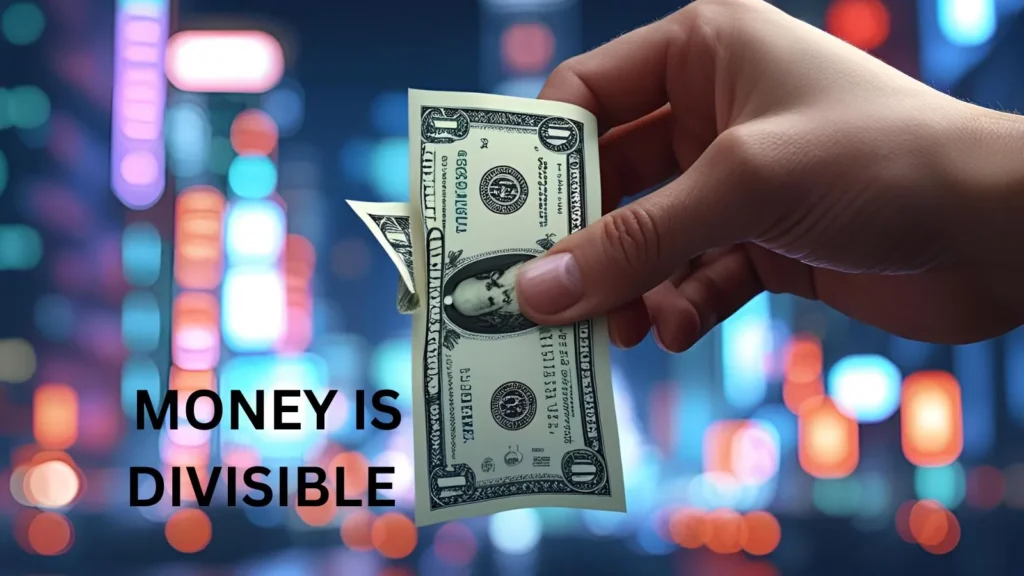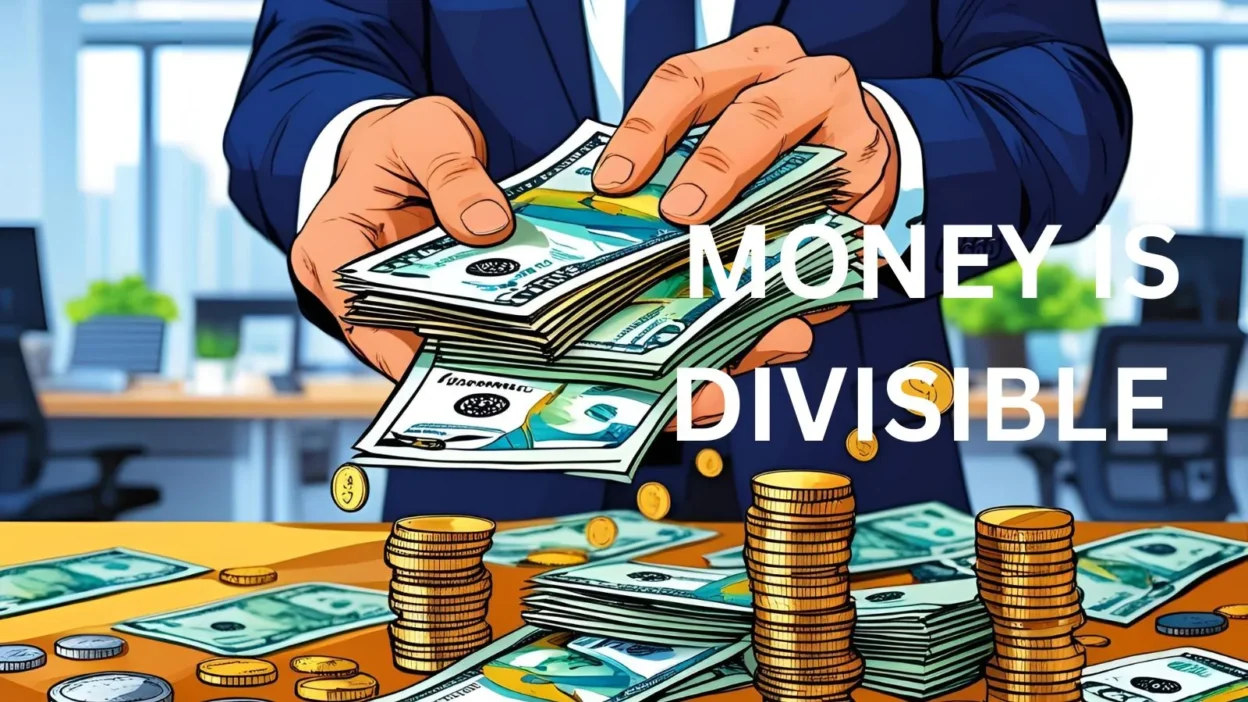Money makes the world go round—but have you ever stopped to wonder why money works the way it does? One reason is that money has special features that help people use it easily. One of those features is divisibility.
So, what does it mean to say that money is divisible? Simply put, it means you can break money down into smaller parts without losing its value. If you have a dollar, you can split it into four quarters, ten dimes, or a hundred pennies—and it’s still worth one dollar.
This matters more than you think. Divisibility is one reason we can buy a candy bar or a car using the same kind of money. It helps with pricing, trading, saving, and even making change at the store.
Let’s explore this idea in simple words and see how divisibility helps money work for everyone.
1. Understanding Divisibility in Simple Terms
To divide something means to split it into parts. So, when we say money is divisible, we mean we can break it into smaller units.
Example:
If you have a $10 bill, you can exchange it for:
- Two $5 bills
- Ten $1 bills
- Forty quarters
👉 No matter how you split it, you still have $10 in value.
💡 This helps everyone use money in small or big amounts depending on what they need.
2. Why Divisibility Makes Money More Useful
Imagine if money came in only large chunks—like $100 bills. Buying a $1 snack or paying $2 in bus fare would be impossible!
Divisibility allows:
- Making exact payments
- Giving and receiving change
- Fair trading of goods and services

Example:
You want to buy a pencil for 50 cents.
Without divisible money, you might have only a $5 bill and no way to make a fair exchange. But with coins or smaller bills, you can pay the exact amount.
🔑 Divisibility helps money fit every situation, big or small.
3. Real-Life Scenarios Where Divisibility Matters
We use divisible money every day without even noticing:
- At a café: Buying a $3.25 coffee
- In school: Paying $0.75 for a notebook
- Online: Splitting a bill of $12.50 between two friends
Example:
You owe your friend $6.50.
You can give them:
- A $5 bill + $1 bill + two quarters
- Or thirteen 50-cent coins
🎯 Thanks to divisibility, you’re flexible with how you pay or receive money.
4. Divisibility Helps Prices Stay Fair
If money weren’t divisible, everything would have to be priced in whole amounts. But that’s not how the world works.
Because money can be split, prices can reflect true value, like:
- $1.99 for a snack
- $0.99 for an app
- $2.75 bus fare
Example:
Your local store wants to sell candy for $0.89.
Thanks to divisible coins, they can set the exact price they want.
🛍 This keeps the market fair and flexible.
5. Divisibility and Digital Payments
Even in digital wallets or banking apps, money remains divisible. You can transfer:
- $0.01 to tip someone
- $3.33 to split a meal
- $99.99 for an online order
Example:
You split a $20 pizza bill with 3 friends. Each of you sends $6.67 to cover your share.
💳 Thanks to digital divisibility, everyone pays their fair part.
6. What If Money Weren’t Divisible?
Let’s imagine money couldn’t be divided. You’d face problems like:
- Paying too much for small items
- Getting no change back
- Not being able to split bills
Example:
You buy a toy for $8, but only have a $10 bill.
Without divisible money, you lose the extra $2.
😬 That’s why divisibility is a must-have feature for any money system.
Final Thoughts
So, what does it mean to say that money is divisible? It means you can split money into smaller parts and still keep its value. This feature makes money easier to use in everyday life—from small purchases to big payments.
Without divisibility, shopping, saving, and sharing money would be much harder. That’s why it’s one of the most important parts of any strong and useful currency system.




